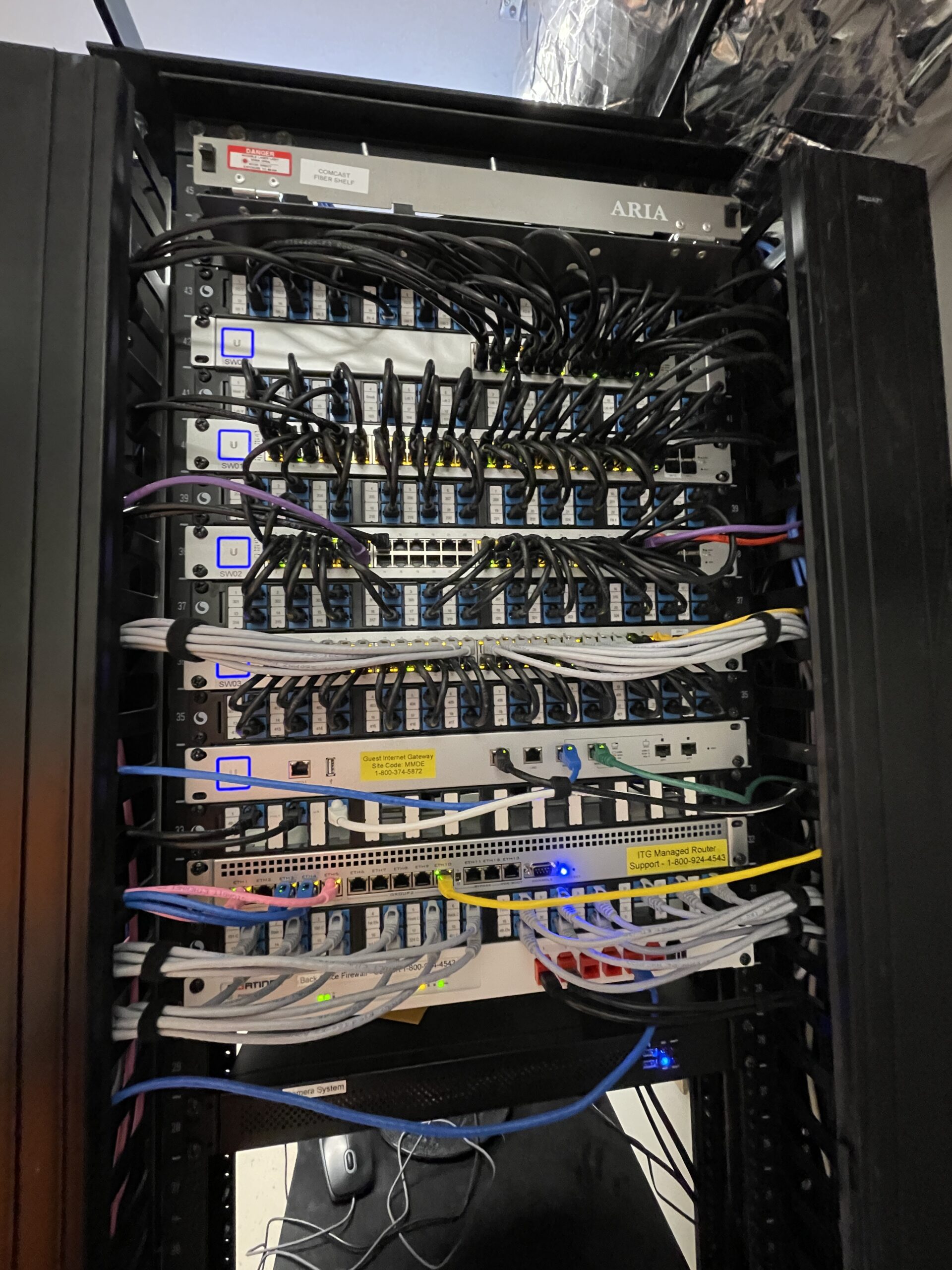UniFi network devices provide a wide range of customizable settings, allowing you to tailor your network to meet specific needs. Below, we’ll go over the key settings found in your UniFi network interface and explain what each one does.
Table of Contents
VLAN ID
- Description: VLAN (Virtual Local Area Network) ID is used to segment network traffic within the same physical network infrastructure. VLANs allow you to create separate networks within the same router, which can be used for isolating traffic, improving security, and better managing network traffic.
- Usage: In this setup, VLAN ID 3 has been assigned, indicating that this network is part of VLAN 3.
Guest Network
- Description: This setting enables or disables the guest network functionality. A guest network allows you to provide internet access to visitors without giving them access to your main network, ensuring the security and privacy of your primary network.
- Status: In this configuration, the guest network is disabled.

Isolate Network
- Description: Network isolation restricts devices on this network from communicating with each other. This is useful in guest networks where you don’t want guests to see or interact with each other’s devices.
- Status: The network is isolated, meaning devices on this network cannot communicate with each other.
Allow Internet Access
- Description: This setting controls whether devices on this network can access the internet.
- Status: Internet access is enabled, allowing devices on this network to connect to external networks.
Network Group
- Description: Network groups help organize different networks within the UniFi environment. It can define which network the settings apply to, such as LAN, WAN, or other custom networks.
- Status: This network is part of the LAN group, meaning it’s designated for local area network use.
IGMP Snooping
- Description: Internet Group Management Protocol (IGMP) Snooping is a feature that allows switches to listen to IGMP traffic between routers and multicast devices. This helps optimize the network by reducing unnecessary multicast traffic, improving performance, especially in video streaming scenarios.
- Status: IGMP Snooping is disabled in this setup.
Multicast DNS
- Description: Multicast DNS (mDNS) allows network devices to discover each other and communicate using familiar names instead of IP addresses. This is commonly used in home networks to allow devices like printers and smart devices to be easily discoverable.
- Status: mDNS is enabled, allowing devices on the network to discover each other easily.
DHCP (Dynamic Host Configuration Protocol)
- Description: DHCP automatically assigns IP addresses to devices on the network, ensuring that each device has a unique IP address without requiring manual configuration.
- Settings:
- DHCP Mode: This is set to “DHCP Server,” meaning this device is responsible for assigning IP addresses to devices on the network.
- DHCP Range: The IP range specifies the pool of addresses that can be assigned. Here, it ranges from
192.168.2.6to192.168.2.254. - DHCP Guarding: This feature prevents rogue DHCP servers from interfering with network operations by filtering out unauthorized DHCP messages. It is currently disabled.

DHCP Service Management
- Description: This section allows for more detailed configuration of the DHCP server.
- NTP Server: Specifies a Network Time Protocol server that devices on the network can use to synchronize their clocks. This is currently disabled.
- Network Boot: Used for PXE (Preboot Execution Environment) booting, allowing devices to boot from the network rather than a local drive. Disabled in this setup.
- Time Offset: Sets the time zone offset for the DHCP server.
- Option 43: Typically used to provide additional information to devices on the network, such as the IP address of a VoIP server.
- WPAD URL: Used to specify a Web Proxy Auto-Discovery Protocol URL, allowing devices to automatically discover proxy settings.
- TFTP Server: Allows devices to download configuration files or other data from a TFTP (Trivial File Transfer Protocol) server.
- Default Gateway: The default gateway IP is set to “Auto,” meaning it is automatically determined by the system.
- DNS Server: The DNS server IP is also set to “Auto.”
- Lease Time: Specifies how long an IP address is reserved for a device before it must renew the lease. Set to
86400seconds (24 hours) in this configuration. - Domain Name: Allows the assignment of a domain name for devices on the network. This is currently not set.
- Custom DHCP Options: Allows for additional DHCP options to be specified, such as defining specific configurations for certain devices.

Conclusion
Understanding and correctly configuring these settings can significantly impact the performance, security, and functionality of your UniFi network. The above configurations represent a common setup for a segmented network with isolated traffic, secure DHCP handling, and optimized device discovery and management.
By carefully managing these settings, you can ensure your network operates efficiently and securely, catering to the specific needs of your environment.


Comments
One response to “UniFi Network Settings Explained: A Deep Dive into Configuration Options”
[…] a UniFi network requires an understanding of various settings and options. Our deep dive into UniFi network settings provides the insights you […]